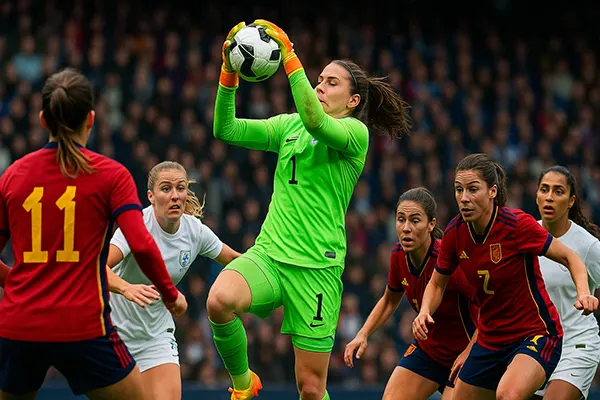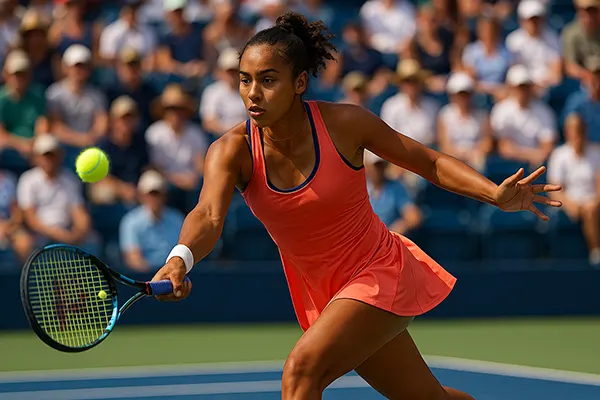In recent years, women’s football has undergone a notable tactical evolution, driven by increasing professionalism, better coaching methodologies, and an expanding global audience. These developments have significantly affected not only match outcomes but also the betting markets tied to women’s competitions. By analysing the top five tactical trends observed in 2024 and early 2025, this article outlines how these approaches influence both gameplay and statistical projections for bettors.
High Pressing and Defensive Line Compression
One of the most widespread strategies now prevalent in women’s football is high pressing, coupled with a compact defensive line. Teams like Spain and Germany have increasingly applied this model, aiming to win the ball higher up the pitch and deny the opponent time to build up attacks. This method disrupts opposing strategies and creates immediate attacking opportunities.
High pressing results in increased turnovers in dangerous zones, enhancing the probability of scoring within the first 10 seconds after regaining possession. This has altered betting patterns related to first-half goals and corner counts, with bettors adjusting odds to reflect heightened early pressure.
Moreover, defensive compression reduces gaps between midfield and defence, minimising the space for opponents to exploit. As a result, matches often display lower shot conversion rates from open play, leading analysts to favour under markets in total goals predictions when these systems are deployed.
Implications for In-Play Betting
Live betting markets have become particularly sensitive to this tactic. If a team demonstrates successful early pressing, odds on next-goal or match outcome shift rapidly, especially when possession is gained frequently in the final third. Bookmakers now factor in pressing efficiency data when adjusting dynamic odds.
Understanding a team’s press intensity—measured by passes per defensive action (PPDA)—can provide bettors with a statistical edge. In matches where both teams press aggressively, over markets may still be viable due to increased transitions and counter-press scenarios.
Conversely, high pressing teams that lack depth in rotation may fade late in the game, creating value in betting markets for late goals or second-half outcomes favouring the opposition.
Positional Flexibility and Hybrid Roles
Another trend reshaping women’s football is the deployment of players in hybrid positions, which blurs the lines between traditional roles. Full-backs operating as inverted midfielders or wingers dropping deep to initiate attacks have become more common, especially among top-tier clubs in England’s Women’s Super League and UEFA Women’s Champions League contenders.
This tactic allows for fluid transitions and overloads in specific zones, leading to superior control of possession and territory. For instance, Chelsea FC Women frequently utilise this approach to destabilise defensive structures and manipulate pressing traps set by opponents.
For betting perspectives, this trend complicates player-specific markets. Goalscorer and assist markets must consider the fluidity of role assignments rather than static position labels, as central defenders may contribute in attacking sequences more than expected due to overload patterns and set-piece design.
Impact on Player Performance Markets
With players regularly switching roles mid-game, markets such as “Player to Have an Assist” or “Shots on Target” require deeper analysis. For instance, midfielders like Grace Geyoro or Georgia Stanway often transition into advanced roles when chasing results, thereby increasing their offensive metrics unpredictably.
Bookmakers have started adjusting odds on these markets using player heatmaps and dynamic positioning data, rewarding bettors who follow form and tactical news closely. Value can often be found where a player’s role evolution is not yet reflected in the odds.
Positional fluidity also increases the likelihood of defensive players contributing to attacking statistics, enhancing long-shot bet opportunities for underdog scorers and assist providers.

Build-Up Play Through the Keeper
Goalkeepers are now integral to build-up play, acting almost as an additional centre-back in possession phases. This evolution mirrors trends seen in men’s football but has become more visible in women’s leagues since late 2023. National teams such as the Netherlands and Australia have embraced this structure to maintain numerical superiority in early build-up stages.
This tactic requires goalkeepers with superior footwork, decision-making, and composure under pressure. Errors are costly but rare among top-level teams, where the keeper is trained to serve as the first line of both defence and attack.
For betting implications, this changes the dynamic of pass completion and possession-related markets. Bettors now consider goalkeeper passing accuracy, long-ball success rates, and number of touches in match prop markets.
Betting Signals from Keeper Distribution
Sharp bettors often examine distribution metrics from keepers to forecast how a match may unfold tactically. High short-pass ratios indicate a controlled build-up, reducing chaotic phases and favouring under markets in goals and bookings.
Alternatively, if a keeper exhibits a high percentage of long balls, it suggests a more direct style of play, increasing volatility and thus value in corner or over markets. These details also influence first-goal timing predictions.
Monitoring team sheets and pre-match press conferences about goalkeeper availability and tactical setup is crucial for anticipating how this trend might manifest in each fixture.




